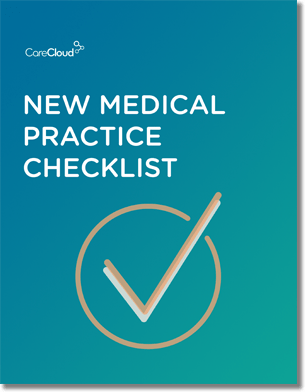Healthcare practices may be open, but it’s not business as usual. The coronavirus (COVID-19) pandemic has changed the way the world thinks and acts, and this is especially relevant in healthcare. Most practices stayed open but may have had to lay off non-essential staff due to decreased patient volume. Others increased virtual care, while all have had to rethink how they will conduct business to survive financially after the COVID-19 pandemic.
The Impact on Practices
Fear and uncertainty have caused many patients’ to delay returning to visit their physicians. Practices have had to work to increase patient confidence in their ability to provide a safe care environment. Healthcare practitioners are usually well-equipped to implement additional screening and safety measures, although shortages of sanitation supplies and personal protective equipment (PPE) have exacerbated this challenge.
To decrease the risk of spreading the virus, protect patients and staff, and ease doubts of patients uncertain about returning, many practices have enacted the following changes:
- Limited seating in waiting room areas to reduce congestion
- Removed high-touch items such as magazines
- Staggered scheduling or offered virtual options to minimize patient volume and satisfy social distancing requirements
- Reduced staffing to essential personnel only
- Required universal masking and increased sanitation stations
- Question patients about potential COVID-19 exposure or symptoms and check temperatures at the door.
The time required for implementing these safety and sanitation measures can take a toll on office efficiency and patient capacity, and positive cashflow.
Patient Impact
Healthcare has been on the frontlines since the start of the COVID-19 pandemic. While many have the false sense that providers are overrun with COVID-related cases, providing care to those hard hit by the virus, the reality is that many practices are struggling. Physicians were quick to implement safety and sanitation measures, yet many patients who needed care opted to stay home. Ongoing reluctance to return to provider offices may be linked to:
- Lack of communication resulting in the patient being unaware that the practice has reopened
- Adherence to the Centers for Disease Control (CDC) recommendations to limit interactions
- Uncertainty regarding in-person appointment expectations
- Fear of virus exposure
- Believing personal health needs can wait
Evolving knowledge and mixed information about the virus’s transmission made implementing changes challenging. Stay-at-home orders, social distancing mandates, and patient safety concerns resulted in delayed elective procedures and postponed routine visits. Forty-nine percent of physicians reported frequently utilizing telehealth services during the pandemic to continue to provide care. Many practices reduced their staffing, hours, or days of operation, resulting in a dramatic reduction of patient volume.
Once the virus curve started to flatten out, some states experienced a resurgence of new infections while others held steady or declined.
Financially Surviving the Pandemic
The COVID-19 pandemic has left many practices unsettled and overwhelmed. A few options for rebuilding income after the epidemic include outsourcing administrative tasks, increasing patient volume by capturing canceled appointments, and acquiring new patients through telehealth services.
Outsourcing Administrative Tasks
The requirements for safe patient care place additional demands on staff members. With the potential for staffing levels to fluctuate if lockdowns occur, or if self-quarantine is necessary after virus exposure, practices can consider outsourcing RCM and back-office support to increase efficiencies and reduce costs.
As a virtual extension of the office staff, a BPO service like MTBC can manage claims and denials and collect debts remotely while maintaining compliance. Thus ensuring essential cash flow continues even if staff require quarantine due to exposure or illness.
Increase Patient Volume
Practices might consider a BPO service to receive help from a virtual team that can assist with scaling growth at the desired pace. A team of professionals can ensure that timely billing and other essential tasks continue even if implementing new safety measures occupy in-office teams.
Fifty-three percent of practices reported rescheduling patients. Many are still catching up with appointments postponed during the height of the pandemic. A BPO service can assist in automating and streamlining operations by tackling scheduling and other time-consuming administrative tasks such as:
- Implementing proactive patient outreach to schedule backlogged and upcoming appointments
- Educating and ensuring patients regarding new processes and office expectations
- Streamlining the intake process and providing options for in-person and virtual visits
Utilizing Automation and Telehealth
COVID-19 has accelerated the adoption and expansion of telehealth services. Embracing new technologies to connect in non-traditional settings enables practices to maintain continuity of care and take on new clients during the pandemic. Proactive practices have taken advantage of waived or loosening telehealth regulations to assist in their financial survival.
Telehealth services can reduce the risk of exposure – while providing virtual care to current high-risk and non-COVID patients – support patient acquisition, and enable ongoing monitoring for the chronically ill. Conditions like heart disease, asthma, and diabetes can be monitored with a telehealth visit.
If another shut-down is required, many could lose access to their point of care without a virtual care option. Sixty-three percent of practices surveyed by CareCloud’s Practice Pulse reported that they plan to continue using telehealth after the pandemic. Uncertainty and fluctuations of COVID-19 infections, and patient reluctance, may have contributed to this decision.
The loosened telehealth regulations make this an ideal time for physicians to consider implementing telehealth as a virtual care option. A few telehealth essentials include:
- Trained staff to select and manage the right technology
- Ensuring documentation meets compliance standards for coding and billing
- Informing patients of their options and the availability of telemedicine visits
- Triaging to manage virtual appointment flow
- Educating patients on how to access and participate in video conferencing
Meeting COVID-19 Challenges
The new normal of patient care has arrived with additional challenges for healthcare practices. Financially surviving the COVID-19 pandemic may require changes such as a shift in patient care provision, and increasing automation and options for virtual care. Fortunately, healthcare practices are known for displaying resilience and adaptability regardless of what the future brings.
About the Author:
Maureen Bonatch MSN, RN, draws from years of experience in nursing administration, leadership, and psychiatric nursing to write healthcare content. Her work has appeared in numerous health system websites and healthcare journals. Her experience as a fiction author helps her craft engaging and creative content. Learn more about her freelance writing at CharmedType.com and her fiction books at MaureenBonatch.com

Do you know what you need when setting up a new medical practice?



